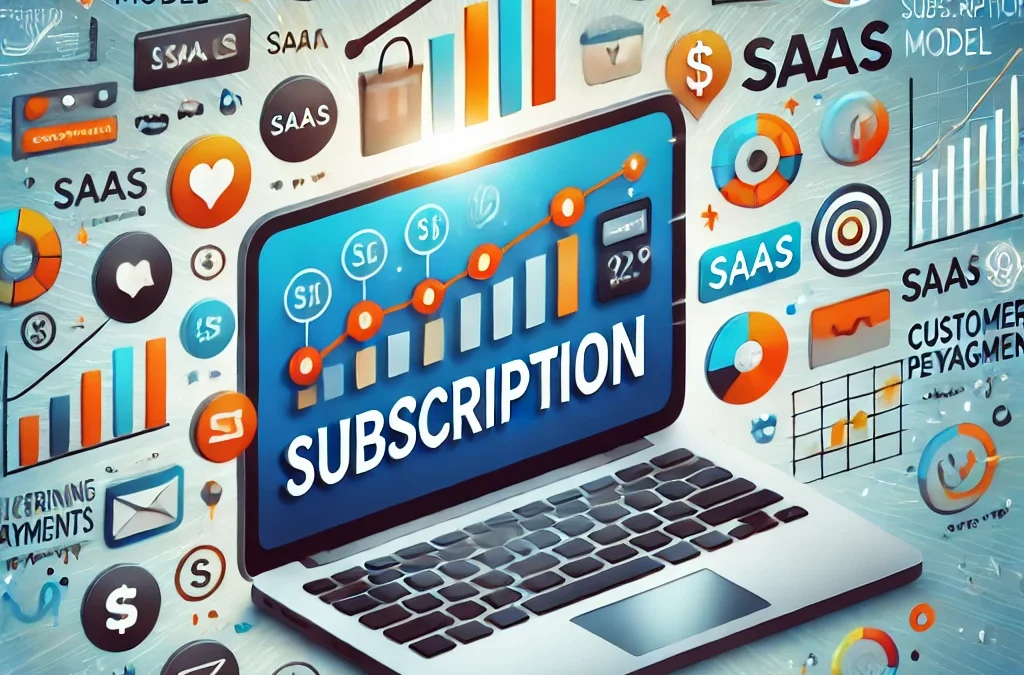Growth in Online Business: Leveraging Subscription-Based Models
In the fast-paced world of online business, companies are constantly seeking new ways to generate consistent revenue and build customer loyalty. One such strategy that has gained significant traction in recent years is the subscription-based model. This business approach provides numerous advantages, from predictable cash flow to enhanced customer engagement, and can be a game-changer for businesses across various industries. In this article, we will explore why subscription-based models are effective for growth, how to implement them, and best practices for maximizing success.
What is a Subscription-Based Model?
A subscription-based model is a business strategy where customers pay a recurring fee—usually on a monthly or annual basis—in exchange for ongoing access to a product or service. Unlike traditional sales models, where customers make one-time purchases, the subscription model focuses on long-term customer relationships, encouraging repeat business.
Subscription-based models are popular across multiple sectors, including:
- E-commerce: Retailers offering monthly boxes of curated products (e.g., beauty boxes, snack subscriptions).
- SaaS (Software as a Service): Companies offering software tools via a subscription (e.g., Adobe Creative Cloud, Microsoft Office 365).
- Media: Streaming services that provide access to entertainment content on a recurring basis (e.g., Netflix, Spotify).
- Health & Wellness: Subscription services offering fitness plans, health supplements, or meal deliveries (e.g., Peloton, HelloFresh).
Why Subscription-Based Models Drive Business Growth
- Predictable and Recurring Revenue
One of the most significant benefits of a subscription model is the predictability it offers. Unlike traditional retail businesses, which may see fluctuating sales, subscription services generate a stable and recurring revenue stream. This consistency allows businesses to forecast cash flow more accurately and invest in long-term growth strategies. - Increased Customer Lifetime Value (CLV)
Subscription models focus on retaining customers for extended periods. The longer customers stay subscribed, the higher their lifetime value (CLV). Since customer acquisition costs (CAC) are typically higher than retention costs, businesses with subscription models can see a significant increase in overall profitability by keeping customers longer. - Customer Loyalty and Engagement
Subscription models encourage businesses to engage with their customers on a continuous basis. Regular communication, exclusive offers, and personalized experiences help strengthen the customer-business relationship. Moreover, the expectation of recurring deliveries or service usage builds loyalty, making it less likely that customers will switch to competitors. - Opportunities for Upselling and Cross-Selling
With ongoing access to customers, businesses can upsell higher-tier plans or cross-sell complementary products. This approach enhances revenue per customer and helps businesses maximize the value they derive from each subscriber. - Scalable Business Model
Once the subscription infrastructure is in place, the business can scale quickly. As more customers sign up, companies can offer additional plans, features, or products with relatively low incremental costs. This scalability makes subscription models attractive to both small startups and large enterprises.
How to Implement a Subscription-Based Model
- Define Your Value Proposition
Before launching a subscription service, it’s essential to determine what value your product or service will provide to customers on a recurring basis. This could be exclusive content, access to premium features, or the convenience of having a product delivered regularly. A clear and compelling value proposition is critical to attracting and retaining subscribers. - Choose the Right Pricing Structure
Pricing is one of the most important factors when implementing a subscription model. Common pricing structures include:- Tiered Pricing: Offering different subscription levels with varying features or benefits.
- Flat-Rate Pricing: A single price for all subscribers, providing uniform access to products or services.
- Freemium Model: Offering a basic version of your product for free, with the option to upgrade to a paid plan for additional features or benefits.
- Ensure Seamless Subscription Management
Managing subscriptions effectively is crucial for maintaining customer satisfaction. Implement a user-friendly platform that allows subscribers to easily manage their subscriptions, such as upgrading, downgrading, or canceling their plans. Subscription billing platforms like Stripe, Recurly, or Chargebee can automate many aspects of subscription management, including payments, renewals, and customer communication. - Offer Free Trials or Discounts
Offering a free trial or introductory discount can entice potential customers to try your service without the risk of an upfront commitment. This allows them to experience the value of your offering before deciding to subscribe. However, it’s essential to ensure that the value provided during the trial period is compelling enough to encourage conversion to a paid plan. - Personalize Customer Experience
One of the keys to retaining subscribers is personalization. Tailor the content or services offered to meet the specific needs and preferences of your subscribers. For example, streaming platforms like Netflix recommend content based on user behavior, while e-commerce subscription boxes might allow customers to customize the products they receive.
Best Practices for Maximizing Success with Subscription-Based Models
- Focus on Customer Retention
Retention is more valuable than acquisition in a subscription business model. To reduce churn (the rate at which customers cancel subscriptions), focus on delivering continuous value, providing excellent customer service, and keeping your offerings fresh and relevant. - Leverage Data and Analytics
Subscription businesses have access to a wealth of data on customer behavior, usage patterns, and preferences. Use this data to make data-driven decisions about pricing, marketing, and product development. For instance, if you notice a particular feature is underutilized, you can either improve it or remove it from your offering to optimize your business. - Build a Community Around Your Brand
Subscribers are more likely to stick around when they feel like they are part of a community. Encourage customer interaction through social media, forums, or events. Create a sense of belonging by fostering positive relationships with your subscribers and offering them opportunities to engage with your brand beyond just the product or service. - Keep Innovation at the Core
The subscription model thrives when the business constantly evolves and adds new features, products, or services to maintain customer interest. Keep innovating and introducing fresh ideas to stay ahead of the competition and keep your subscribers engaged. - Offer Flexible Subscription Options
Flexibility is important in retaining subscribers. Allow customers to change their subscription plans as needed—whether it’s upgrading, downgrading, or pausing their subscription for a certain period. Flexibility makes it easier for customers to commit long-term.
Conclusion
Subscription-based models provide a sustainable path for growth, offering benefits like predictable revenue, increased customer retention, and opportunities for upselling and personalization. By focusing on delivering ongoing value, utilizing data-driven strategies, and prioritizing customer satisfaction, businesses can effectively implement a subscription model that not only meets customer needs but also fosters long-term success.
Incorporating a subscription-based approach can be transformative, enabling businesses to scale, improve customer loyalty, and drive revenue growth. Whether you’re a SaaS company, e-commerce retailer, or content provider, now is the time to consider integrating a subscription service into your business strategy.


Recent Comments